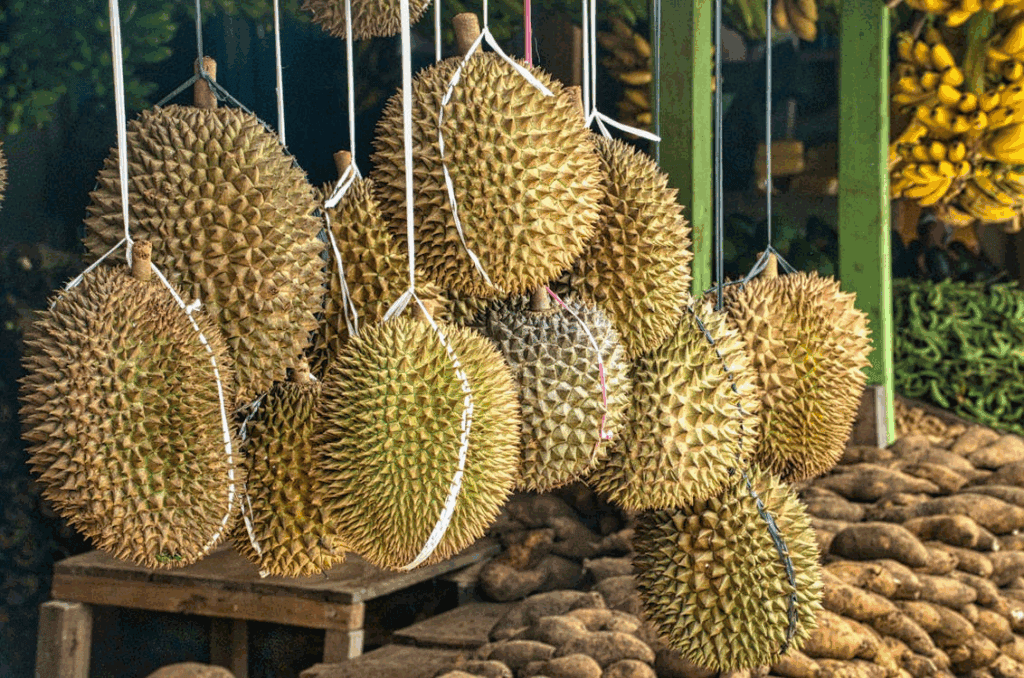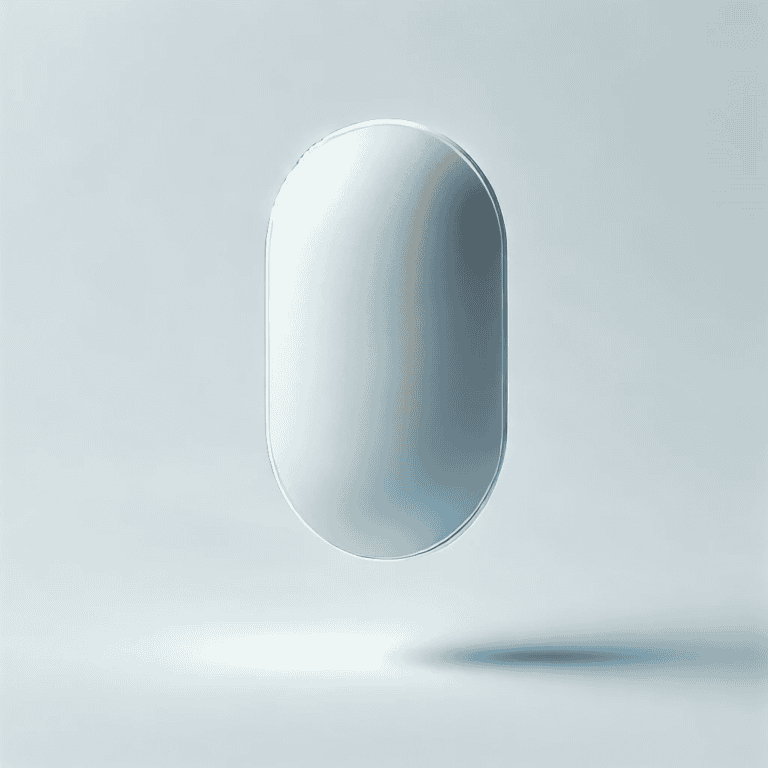Durian Magic: From Stinky to Yummy with Tech
An opened durian fruit with a spiky shell and soft yellow flesh inside.
Durian is a large tropical fruit famous for its strong smell and unique taste. It’s often nicknamed the “King of Fruits” in Southeast Asia. Durians have a hard, spiky shell and can weigh up to 7 pounds each. Inside, they have soft yellow flesh that is very rich and creamy. Durian is also very nutritious, providing lots of vitamins and fiber. But what really makes durian stand out is its powerful flavor – a mix of sweet heavenly taste and, to some, a horrible smell!

What Does Durian Taste and Smell Like?
Fresh, ripe durian has an incredibly sweet and creamy taste. Many people describe the flavor as being like custard or cream with hints of caramel, vanilla, or even cheesecake. The texture of durian flesh is soft and silky, almost like a pudding. In Southeast Asia, durian is a delicacy because of this lush sweetness.
However, durian is even more famous (or infamous) for its smell. The fruit gives off an extremely pungent odor that some people find awful. In fact, durian’s smell is so strong that it has been banned on public transportation in places like Singapore because it can bother other passengers. How bad can it be? Well, people have described durian’s scent in some wild ways. For example, it’s been compared to “rotten onions” and “turpentine,” or even “raw sewage”! Others say it smells like dirty gym socks mixed with gasoline. These descriptions might make you think durian smells disgusting – and to many first-timers, it does. But interestingly, not everyone hates it. Some people actually love the smell, and say it’s part of what makes durian special. Whether you find the odor funny or gross, there’s no doubt it’s unforgettable.
Why Does Durian Smell So Strong?
What causes this notorious smell? It all comes down to chemistry and biology. Durian’s smell comes from a bunch of different chemicals naturally present in the fruit. Scientists have discovered that durian releases many smelly compounds as it ripens. One research team in Germany found 19 distinct chemicals that make up the durian aroma. Some of these chemicals smell sweet and fruity, while others smell like sulfur or onions. For example, one of the main odor chemicals in durian is called ethanethiol, which gives a strong rotten onion or egg-like smell. As the durian fruit ripens, it produces more ethanethiol, so the riper the durian, the stronger its odor becomes.
But why would a fruit smell so bad on purpose? Scientists believe there is an evolutionary reason. A 2017 genetic study of durian found that the fruit has special genes that ramp up the production of sulfur compounds (the smelly stuff) when the fruit is ripe. The hypothesis is that the pungent odor helps attract animals to the fruit. In the wild, a strong smell can lure animals like monkeys and other primates to come eat the durian. These animals then carry the fruit or its seeds away and help spread the durian’s seeds in the jungle. In other words, the stinky smell benefits the durian plant by ensuring its seeds get dispersed by curious animals. It’s a clever natural trick – what’s repulsive to humans might be irresistible to a durian-loving animal!
New Technologies and Innovations
Durian’s unique flavor and odor have inspired scientists and innovators to develop new technologies around it. Here are some cool examples of how technology is used to study and improve durian:
- Identifying the Smelly Chemicals: Researchers use advanced instruments to analyze durian’s aroma. In one study, they used a tool called gas chromatography to break down the durian smell into individual chemicals. They discovered the key culprits behind the odor, including a fruity-smelling compound and a couple of onion-like sulfur compounds. By pinpointing these chemicals, food scientists can better understand how durian’s flavor works and even attempt to replicate it or tone it down in products.
- Studying Durian’s DNA: Scientists have also studied durian at the DNA level. By sequencing the durian genome (reading its DNA code), they found that durian has about 46,000 genes and some that are dedicated to producing its strong aroma. Notably, those odor-producing genes become very active when the fruit is ripe. This discovery in genetics confirmed why durian smells strongest at peak ripeness. Knowing the durian’s DNA also opens doors to protecting durian species and improving cultivation by selective breeding.
- Breeding a Stink-Free Durian: Believe it or not, there are efforts to make less smelly durians! In Thailand, a horticulturist spent 25 years cross-breeding different durian varieties to create a “stink-free” durian. By carefully selecting and growing generation after generation, he developed new durian fruits that have a much milder odor than normal. These special durian varieties (with names like Chantaburi No. 1) are aimed at people who love the taste of durian but can’t handle the smell. However, this idea is controversial – many durian lovers argue that without the strong smell, durian isn’t the same. They say the aroma actually enhances the flavor, and removing it takes away part of the fun!
- High-Tech Ripeness Tests: Farmers usually sniff or shake a durian to guess if it’s ripe, but new tech can help make this more accurate. Scientists in Thailand recently invented a simple paper-based sensor to test durian ripeness. This device can measure substances in the durian’s stem juice (like sugar levels) without having to cut the fruit open. As a durian ripens, the sugar content in the fruit goes up. The sensor changes color based on the sugar and amino acid levels, telling growers if the durian is mature or not. This kind of non-destructive test could help farmers harvest durians at the perfect time and reduce waste. It’s like a high-tech durian check-up!
Durian in Snacks and Treats
Despite its polarizing smell, durian’s flavor is very popular and is used in all kinds of snacks and desserts. In Southeast Asia, you’ll find durian flavor in many everyday treats, such as:
- Candy and Cookies: Durian candies and cookies are common. The fruit’s sweet taste is often made into candies or filled into biscuits (cookies) as a creamy paste.
- Ice Cream: Durian ice cream is a hit among those who enjoy the fruit. The creamy texture and sweetness of durian make it perfect for ice cream and sorbets.
- Milkshakes: Some cafes blend durian flesh into milkshakes or smoothies. A durian milkshake is like a thick, tropical smoothie with a powerful aroma!
- Cappuccino and Coffee: Believe it or not, there are durian-flavored cappuccinos and coffees. The durian adds a unique sweet note to the coffee (for adventurous drinkers).
These examples show how food technology and creativity have made it possible to enjoy durian’s flavor in many forms. Making products like durian ice cream or candy often involves capturing the fruit’s essence in a way that tones down the smell but keeps the delicious taste. By incorporating durian into recipes, manufacturers allow more people to try it without being overwhelmed by the odor. From high-tech research labs to your local ice cream shop, the world of durian flavor is full of interesting science and innovation.
References:
- Allrecipes – What Is Durian Fruit? (Nick DeSimone, 2023) https://www.allrecipes.com/article/what-is-durian-fruit-2/#:~:text=Fresh%2C%20ripe%20durians%20have%20an,sometimes%20used%20in%20savory%20recipes
- IDT DNA Technologies Blog – Why does durian smell so bad? (Jeff Schmerker, 2021) https://www.idtdna.com/pages/community/blog/post/what-makes-the-durian-smell-so-bad#:~:text=%E2%80%9CThe%20smell%20evokes%20reactions%20from,in%20the%20lavatory%2C%E2%80%9D%20wrote%C2%A0Anthony%20Burgess
- NPR – Purists Sniff As Stink-Free Durian Fruit Seeks A Fan Base (Alastair Bland, 2012) https://www.npr.org/sections/thesalt/2012/08/06/158194603/purists-sniff-as-stink-free-durian-fruit-seeks-a-fan-base#:~:text=,launched%20Amrita%20Winery
- LCGC Chromatography Online – Deconstructing Durian Odour (Lewis Botcherby, 2017) https://www.chromatographyonline.com/view/deconstructing-durian-odour#:~:text=Nineteen%20compounds%20had%20their%20odour,which%20smells%20like%20roasted%20onion
- Analytica Chimica Acta (via PubMed) – Microfluidic paper-based durian fruit maturity assessment (Mettakoonpitak et al., 2024) https://pubmed.ncbi.nlm.nih.gov/39396311/#:~:text=hindering%20their%20adoption%20by%20farmers,was%20measured%20using%20gold%20nanoparticle



